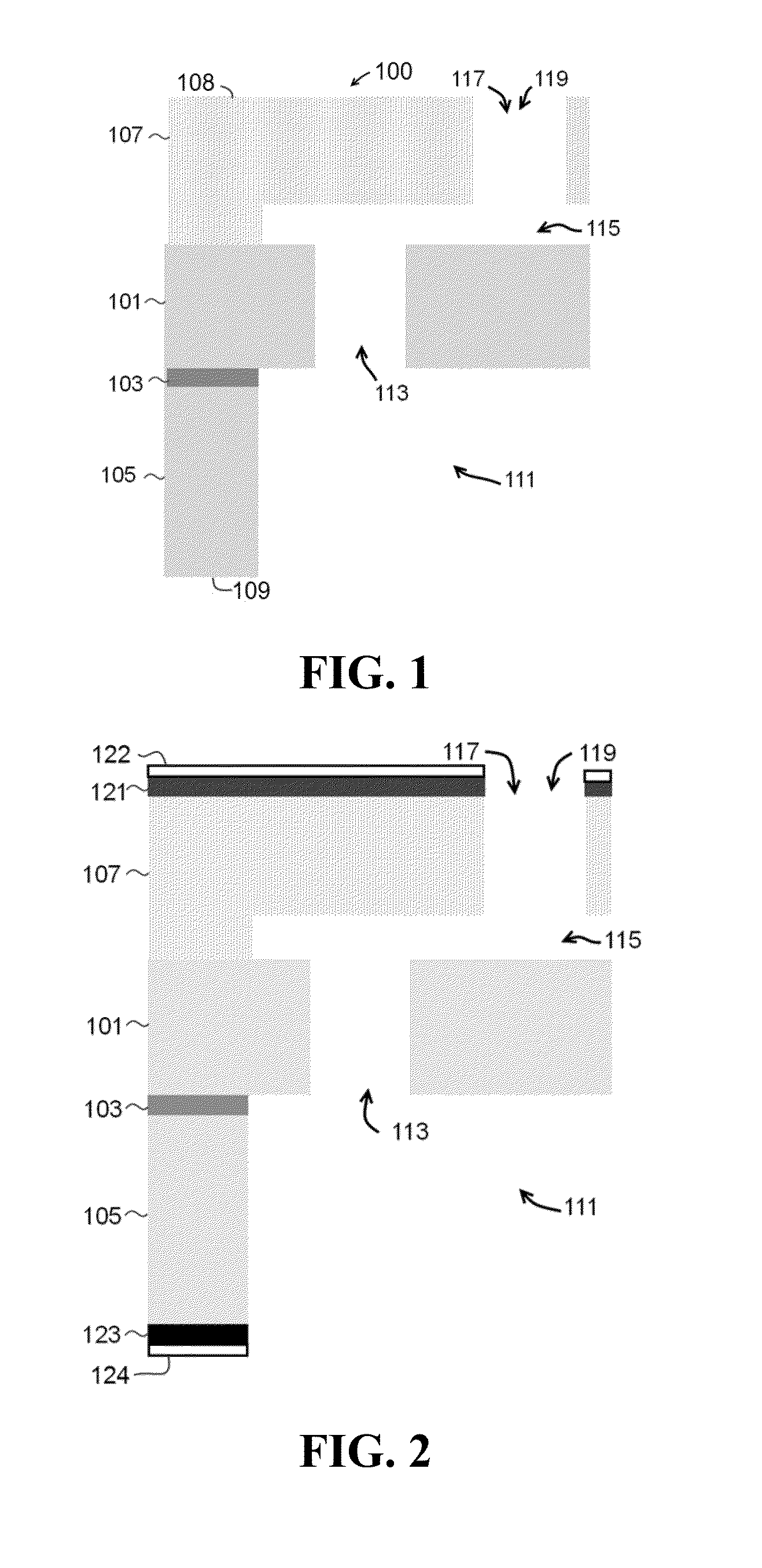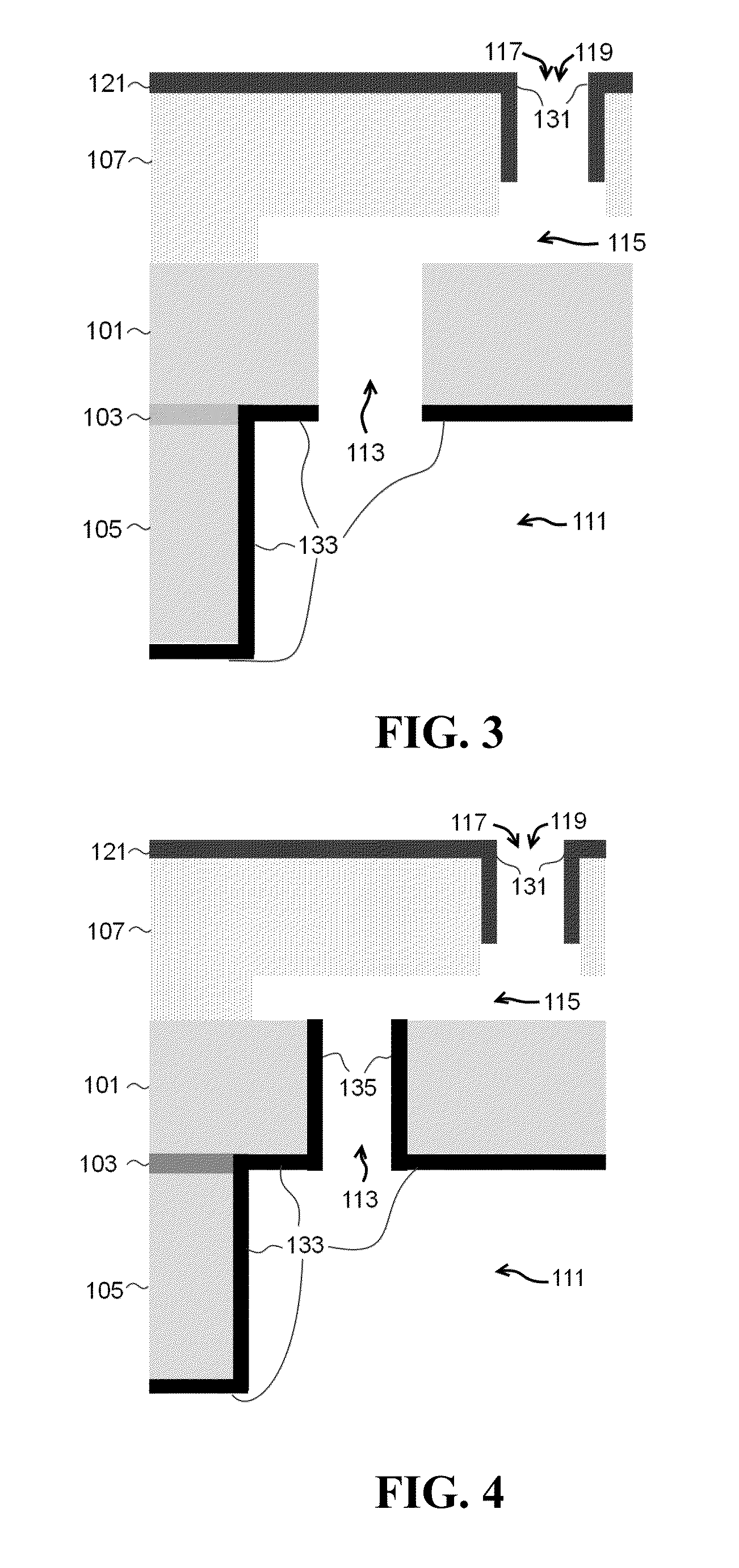Nanochanneled device with electrodes and related methods
a technology of nanochannel electrodes and electrodes, which is applied in the field of therapeutic agents, can solve the problems of limiting the use of these devices, the lack of continuous regulation of the release of drugs from these devices, and the inability to create therapeutic agent delivery devices capable of controlling the release of drugs, etc., and achieves the effect of synchronizing chronotherapy and further requiring active control
- Summary
- Abstract
- Description
- Claims
- Application Information
AI Technical Summary
Benefits of technology
Problems solved by technology
Method used
Image
Examples
second embodiment
[0338]The bulk microfabricated nanochannel membranes (NDS) used in this study consists of a micromachined silicon wafer and a Pyrex cap housing electrodes. The silicon wafer presents an interdigitated finger geometry composed of parallel microchannels connected to each other by an array of perpendicular nanochannels. The top surfaces of the micro- and nanochannels are obtained by anodically bonding the Pyrex capping wafer to a grid of anchor points. The nano-metric dimension of the nanochannels is the depth. As a result of a difference in potential applied to the embedded membrane electrodes, drug molecules enter the membrane through the inlet that is drilled through the Pyrex, move through a set of 136 microchannels, then into a mesh of 120 nanochannels (two sets of 60 on each microchannel), and finally reach the outlet that is wet etched through the silicon wafer through another set of 136 microchannels.
[0339]Exemplary embodiments enable electrokinetic drug delivery by properly co...
PUM
 Login to View More
Login to View More Abstract
Description
Claims
Application Information
 Login to View More
Login to View More - R&D
- Intellectual Property
- Life Sciences
- Materials
- Tech Scout
- Unparalleled Data Quality
- Higher Quality Content
- 60% Fewer Hallucinations
Browse by: Latest US Patents, China's latest patents, Technical Efficacy Thesaurus, Application Domain, Technology Topic, Popular Technical Reports.
© 2025 PatSnap. All rights reserved.Legal|Privacy policy|Modern Slavery Act Transparency Statement|Sitemap|About US| Contact US: help@patsnap.com



